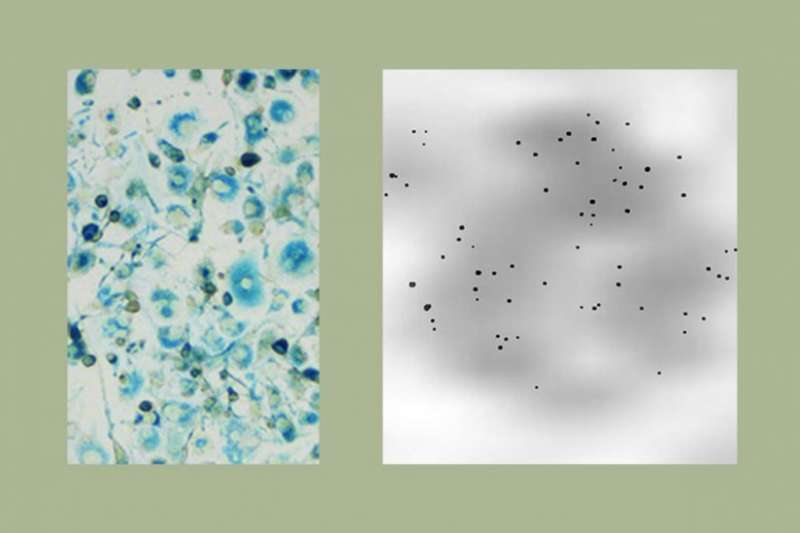In the first stage of the experiment, left, researchers labeled and viewed cells under a microscope. On the right, cells are depicted using a combination of MRI and microscopy (each black dot represents one labeled cell). Credit: Danny JJ Wang
Neuroscience researchers have long used Magnetic Resonance Imaging to study the basic structure of the brain in health and disease, but MRI scanners can't typically provide insights at the cellular level. In an MRI image, each voxel—the 3-D equivalent of a pixel—represents tens of thousands of brain cells.
A breakthrough study led by the Mark and Mary Stevens Neuroimaging and Informatics Institute at the Keck School of Medicine of USC shows that it's possible to use high-resolution MR imaging and a novel cell-labeling technique to visualize less than 100 cells. The results will ultimately allow clinicians to assess the effectiveness of cell-based therapies used to treat various cancers.
"The application of this new method is very broad," said Danny JJ Wang, professor of neurology at the institute, adding that it can be used to monitor both immune and stem-cell therapies. "We used standard clinical equipment and FDA-approved drugs in the hopes that the results can translate quickly from bench to bedside."
MRI resolution: labeling cells
In the study, researchers tested a new method of labeling cells, which they correctly predicted would render cells easier to visualize in an MRI scanner. They labeled macrophages, a type of white blood cell involved in the immune response, with three FDA-approved compounds—heparin, protamine and ferumoxytol. The team then used the institute's MRI scanners, including the new ultra-high magnetic field 7T Terra, to capture images of the macrophages. In some trials, they were able to detect as few as 62 cells labeled with the three compounds.
"One of our missions at INI is to work alongside clinicians to solve intractable problems facing the modern medical community," said Arthur W. Toga, provost professor at USC and director of the institute. "Dr. Wang's team is committed to advancing that mission by expanding the reach of our powerful imaging equipment."
Provided by University of Southern California























